한식 읽기 좋은 날
Korean Gourmet Blooming as Fine Dining
Editor’s Letter
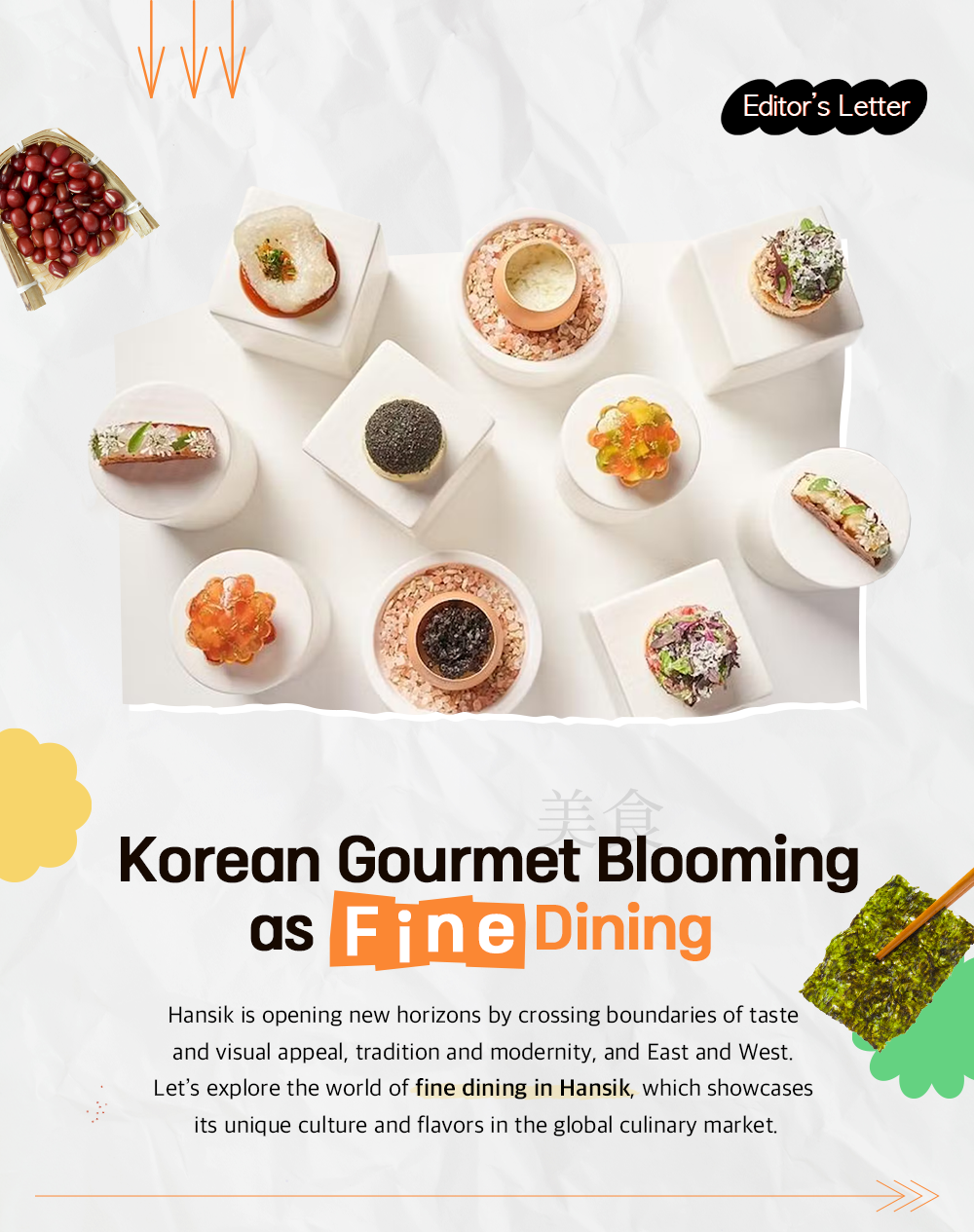
Hansik is emerging as a new star on the fine dining stage, transcending everyday dining. Hansik fine dining chefs are creatively reinterpreting traditional Korean ingredients and cooking methods, such as fermented foods and traditional sauces, while leading global culinary trends. They have gained recognition in prestigious rankings like the Michelin Guide and the World's 50 Best Restaurants.
Bridging taste and visual appeal, tradition and modernity, as well as Eastern and Western influences, Hansik is opening new horizons. Let’s explore the world of fine dining in Hansik, showcasing its unique culture and flavors in the global culinary market.

▲ Menu of the Hansik fine dining restaurant 'Jungsik'
Royal Court Cuisine Embodying the Essence of Royal Tradition
Korean royal and noble court cuisines capture the essence of Korean heritage. This longstanding tradition forms the foundation of today’s Hansik fine dining. Originating in the royal courts of the Joseon Dynasty, royal court cuisine captivated the taste buds of the royal family with its lavish ingredients and meticulous preparation. Similarly, dishes thoughtfully prepared for guests or rituals in noble homes carried unique recipes and a sense of elegance.
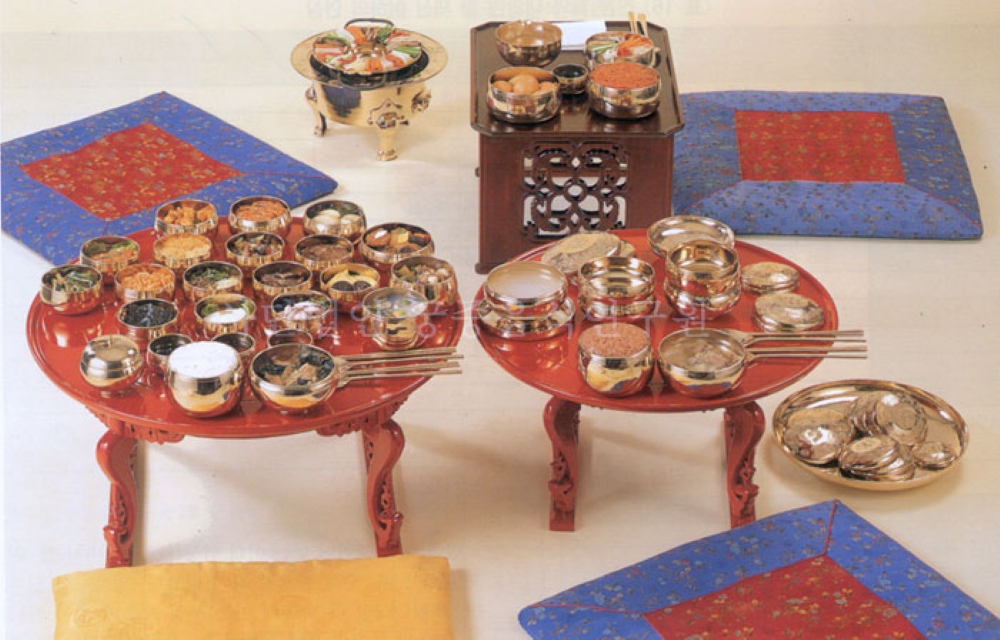
▲ A recreation of the Surasang (royal table) from the Joseon Dynasty
In particular, royal court cuisine during the Joseon Dynasty was based on the philosophy of ‘sikchi’, which emphasized that food plays a vital role in managing and preventing illness, thus contributing to physical health. In this context, juk (porridge), sungnyung (scorched rice tea), and japgokbap (steamed multi-grain rice) were staple foods, while special dishes like bungeojjim (steamed crucian carp) and mineohoe (sliced raw croaker) were sometimes served at the king's table. This royal philosophy was also passed down to the noble homes and had a profound influence on cooking methods and table settings in the late Joseon period, laying the foundation for the development of high-end Hansik culture.
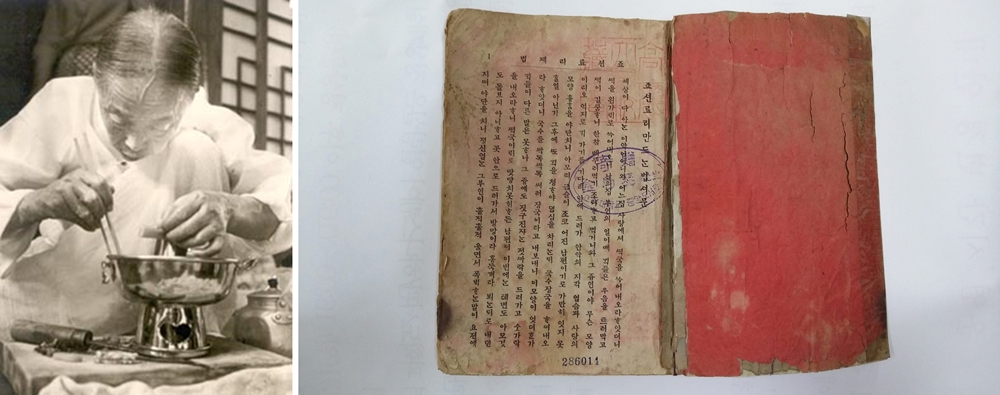
▲ (From left) Han Hui-sun, the first holder of the title of "Artisan of Royal Court Cuisine," and Joseon Yori Jebeop, the first modern Korean cookbook on culinary techniques.
The methods of preparing royal court cuisine have been passed down to the present day through various historical records and the transmission of culinary skills by Han Hui-sun, the last kitchen court lady of the Joseon Dynasty. Han entered the royal palace in 1901 as a kitchen court lady in Deoksugung palace, where she served Kings Gojong, Sunjong, and Empress Sunjeong, preparing royal court cuisine. Later, through lectures and writings, she worked tirelessly to preserve and publicize the nearly forgotten art of royal court cooking. For her contributions, she was recognized in 1971 as the first holder of the title of "Artisan of Royal Court Cuisine," a designation granted by the Korean government as part of its intangible cultural heritage program.
After Korean’s liberation, Han’s student, Hwang Hye-seong, continued the legacy of Joseon royal court cuisine. The tradition was further preserved and expanded through the efforts of various experts, including Bang Shin-young, who compiled Korea's first modern cookbook, Joseon Yori Jebeop, and Jo Ja-ho, who established Korea's first specialized Hansik dessert shop. These contributions played a crucial role in maintaining and passing down the rich heritage of traditional Korean cuisine.
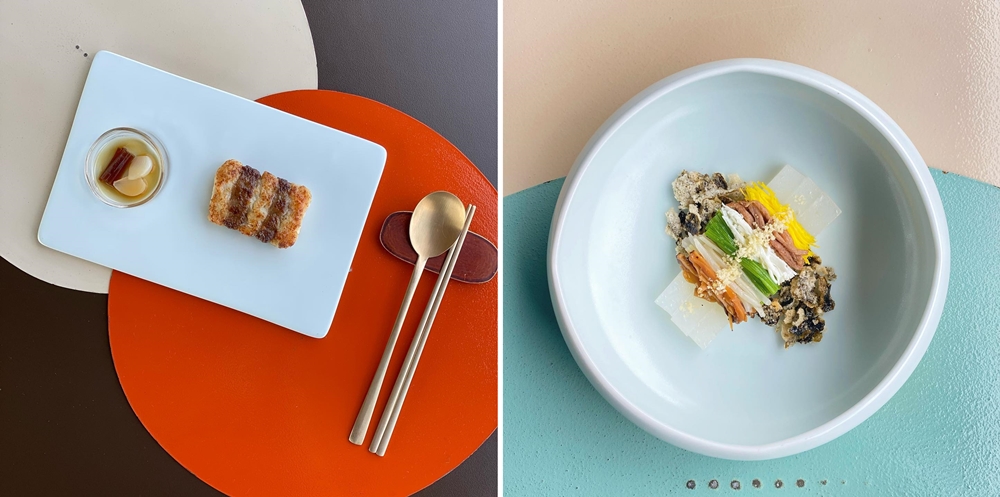
▲ Menu of the Hansik fine dining restaurant Hansik Gonggan. (From left) Mineosaseuljeok (Skewer Grilled Meat and Croaker), Tangpyeongchae (Mung Bean Jelly Salad), and Gimbugak (Laver Chips)
From the late Joseon Dynasty to the period following Korea's liberation, the refined food culture of Korea was passed on to the public through yoritjip (traditional Korean restaurants). A representative example is Myeongwolgwan, the first modern restaurant in Korea, which opened in Seoul’s Jongno district in 1904. In the 1920s, yoritjip became established as high-end restaurants and were commonly used as venues for various social gatherings. After Korea's liberation, these restaurants continued to serve as popular meeting places for politicians and business leaders. However, by the 1980s, yoritjip gradually disappeared, and their place was taken by hanjeongsik restaurants, which specialize in traditional Korean full-course meals.
A leading figure in modern Hansik fine dining is Chef Hee-sook Cho, who runs the restaurant Hansik Gonggan. Often referred to as the ‘Godmother of Hansik’, she has built an illustrious career, starting with her work at hotel Korean restaurants, and has become a spiritual mentor to many chefs. Chef Cho not only creates dishes that blend tradition and modernity but also actively promotes Hansik to the world through writing, culinary classes, and various other initiatives.
Hansik Spreading Its Reach to the World
Hansik fine dining began to gain significant attention in the 2010s. As chefs emerged who reinterpreted traditional Korean cooking methods and plating in modern ways, interest in Hansik fine dining grew both domestically and internationally. At the forefront of this movement was Chef Jungsik Yim and his restaurant Jungsik. Gaining widespread recognition after earning two Michelin stars in New York, Chef Yim reinvented familiar Hansik ingredients into groundbreaking dishes, presenting a new paradigm of Hansik called ‘New Korean’. Through this innovative approach, he played a key role in elevating the global status of Hansik.
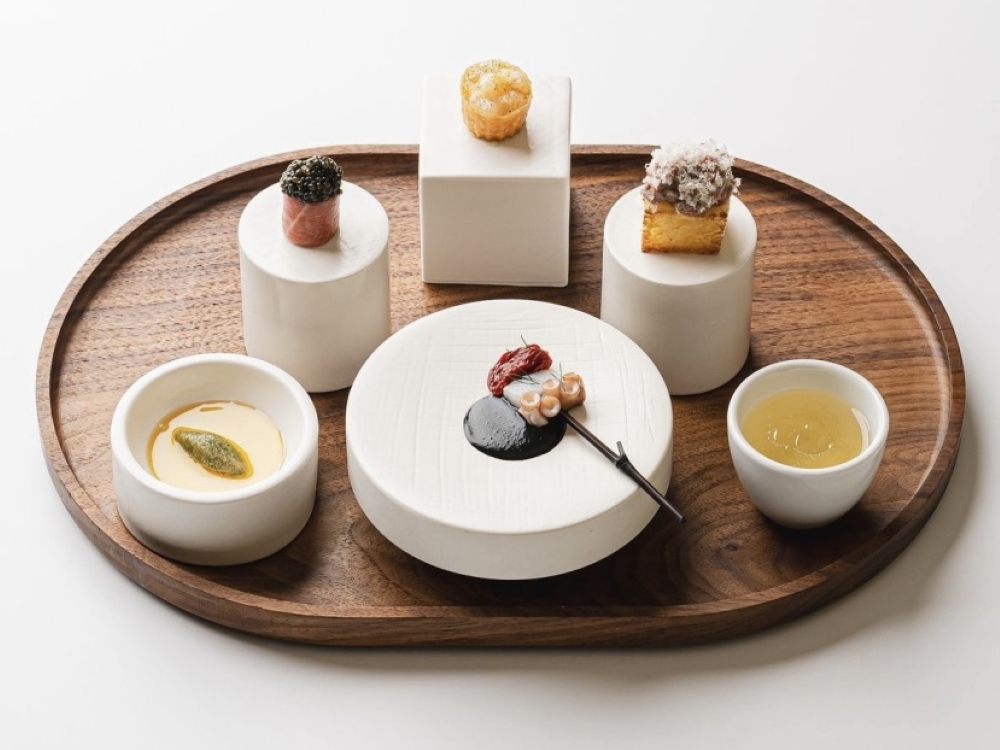
▲ Menu of the Hansik fine dining restaurant Jungsik
Since then, various chefs have introduced Hansik fine dining to the global stage, expanding its reach. In 2014, Chef Min-goo Kang opened Mingles, which was selected as one of Asia's 50 Best Restaurants just two years after its opening. By 2024, Mingles became the first Korean restaurant to enter the prestigious World's 50 Best Restaurants, gaining global recognition. In addition, Chef Kang published the book Jang: The Soul of Korean Cooking in 2024, where he explored Korea's jang (fermented sauce) culture and its modern applications.
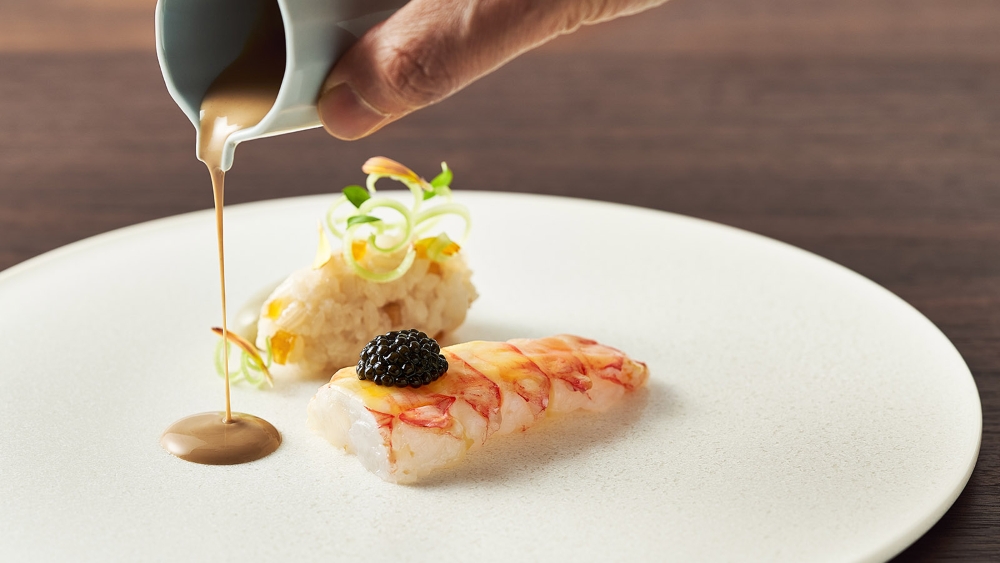
▲Menu of the Hansik fine dining restaurant Mingles
Recently, there has been a growing wave of Hansik fine dining in New York. In the Michelin Guide New York 2023, a record-high 11 Korean restaurants were listed, and the New York Times's ‘100 Best Restaurants in New York 2024’ included 7 Korean establishments, showcasing their prominence. At the forefront of this movement is Chef Jung-hyun Park’s ‘Atomix’. Atomix, praised as ‘North America's Best Fine Dining’, earned two Michelin stars and, in 2024, ranked 6th on the World's 50 Best Restaurants list, helping to elevate Hansik's global reputation.
Atomix not only offers a unique culinary experience by utilizing Korean ingredients and cooking techniques, but it also naturally showcases Korean culture and sentiment. The menu features Korean terms like ganjang (soy sauce) and dasima (kelp) written with their original Korean pronunciation, while elements of Korean culture are subtly incorporated into the tableware and uniforms, creating an authentic cultural atmosphere.
Hansik as a Spatial and Experiential Journey
Hansik fine dining offers more than just food—it provides a holistic experience where one can immerse themselves in Korean culture and sentiment. In addition to reinterpreting traditional flavors in a modern way, every element, from the space and service to the interior design, is thoughtfully crafted to evoke the essence of Korean culture. For instance, the Hansik fine dining restaurant Oiji Mi in New York incorporates Korean elements with elegance, using interior design inspired by the wood grain of traditional Hanok homes, lotus flower-themed lighting, and plating in brassware, all of which seamlessly integrate Korean aesthetics into the dining experience.

▲ (From left) Interior design of the fine dining restaurants Oiji Mi and NARO in New York
In addition, NARO in New York expresses Korean beauty through details rooted in art and craftsmanship. The entrance features a jogakbo (traditional Korean patchwork) fish mobile, while the lighting on the wall is inspired by Joseon-era paintings chaekgado (book paintings) and the Tongcheonmunamdo. Guests can also experience Korea's aesthetic sense through the ceiling design, which depicts the Joseon-era celestial map Cheonsang Yeolcha BunyaJido. These elements offer a rich, immersive experience of Korean artistry.
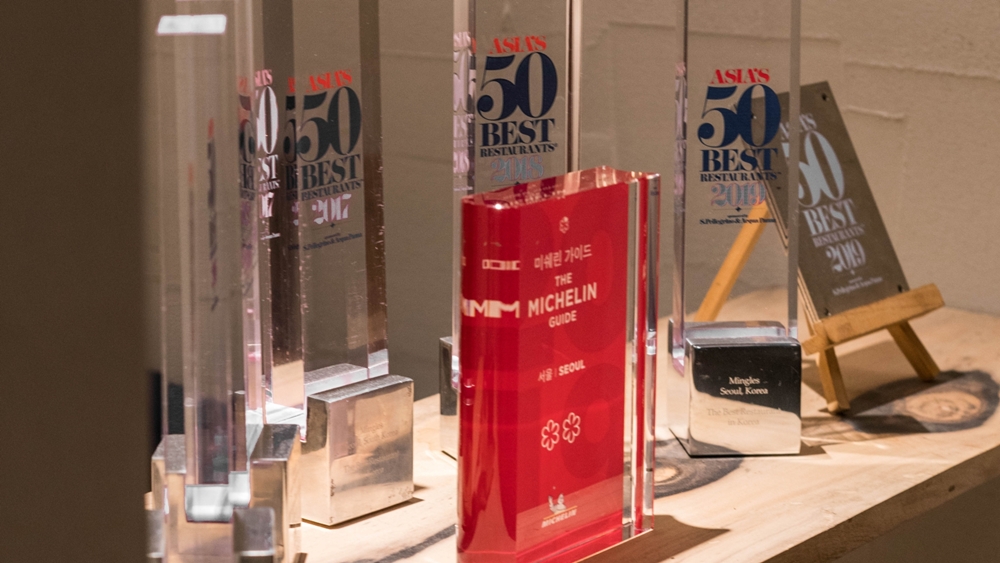
▲ Hansik Fine Dining Restaurant Mingles
Hansik is showcasing remarkable possibilities, diverse flavors, and a deep culinary culture through fine dining. As a result, it is no exaggeration to say that contemporary fine dining in New York is now led by innovative and creative Hansik, drawing immense attention. Hansik fine dining, which shares not only food but also Korean culture and sentiment, is playing a pivotal role in bridging cultures, and this is just the beginning of its glory.
References Hansik Cultural Encyclopedia by Young-ha Joo et al., Human & Books, 2024, Korean National Encyclopedia, Seoul History Archive, Cultural Heritage Administration, Official websites and Instagram accounts of each restaurant.










